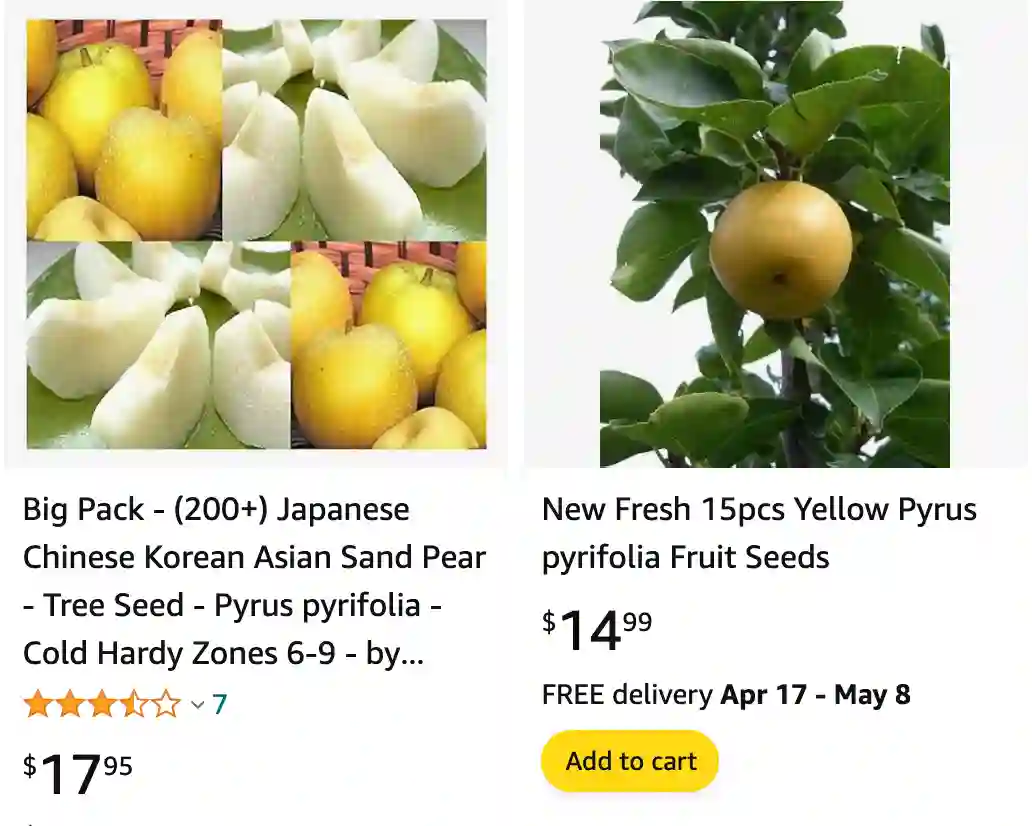
A Fruitful Obsession: My Journey with the Pyrus Pyrifolia ’20th Century’
For years, my garden has been a canvas for experimentation. I’ve nurtured a kaleidoscope of blooms, coaxed vegetables from the soil, and reveled in the buzz of visiting bees. But recently, a new resident has captured my heart – the Pyrus pyrifolia ’20th Century,’ or the simply named ’20th Century’ Asian pear tree.
This captivating tree has become an obsession, and for good reason. Its delicate white blossoms in spring are a feast for the eyes, transforming into a bounty of crisp, juicy pears in late summer. But the journey from sapling to harvest requires a touch of knowledge. In this article, I’ll share my experiences and delve into the world of the ’20th Century’ pear tree, hoping to inspire your own fruitful adventure.
80 Species in Genus Pyrus – Pears
What is Pyrus Pyrifolia?
Pyrus pyrifolia, literally translating to “fire pear” from Greek, is a species of Asian pear native to East Asia. These aren’t your typical, European-style pears. ’20th Century’ pears boast a unique texture – crisp and refreshing, with a hint of honeyed sweetness. They’re also known for their exceptional storage life, lasting for months in cool conditions.
Beyond the delightful fruit, the ’20th Century’ offers year-round beauty. In spring, a profusion of white blossoms adorns the branches, attracting butterflies and pollinators. Summer brings a healthy canopy of green leaves, offering dappled shade. Then, autumn ignites the tree with fiery hues of red and orange, a spectacular finale before winter’s slumber.
How to Pronounce Pyrus Pyrifolia?
Let’s face it, “Pyrus pyrifolia” can be a mouthful. Here’s a breakdown to help you master the pronunciation:
- Pyrus (pie-rus): The emphasis is on the first syllable, with a long “i” sound.
- Pyrifolia (peer-ih-FOE-lee-uh): Break it down further – “peer-ih” for the first part, “FOE” like the word “foe,” “lee” as in “lee shore,” and “uh” like the end of “sofa.”
With a little practice, you’ll be confidently discussing your ’20th Century’ pear tree in no time.
How to Care for Pyrus Pyrifolia ’20th Century’ Trees?
Growing a healthy, fruitful ’20th Century’ pear tree is easier than you might think. Here are some key points to consider:
- Sunlight: These sun-worshippers crave at least 6 hours of direct sunlight daily.
- Soil: Well-drained, fertile soil is essential. Amending your existing soil with compost or aged manure can provide the perfect growing medium.
- Watering: Regular watering is crucial, especially during the first few years after planting. Aim to keep the soil consistently moist, but not soggy. As the tree matures, watering needs decrease.
- Pollination: The ’20th Century’ pear is not self-pollinating, meaning it needs a nearby pollinator of a compatible Asian pear variety to produce fruit. Planting another ’20th Century’ pear tree within 15-20 feet is ideal, or consider a different Asian pear variety like ‘Nijisseiki’ or ‘Chojuro.’
- Pruning: Regular pruning helps maintain a healthy structure and encourages fruit production. Prune during the dormant season (late winter/early spring) to remove dead, diseased, or crossing branches.
Additional Tips for Success
- Mulch: Apply a 2-inch layer of organic mulch around the base of the tree to retain moisture, suppress weeds, and regulate soil temperature.
- Fertilization: A balanced fertilizer applied in early spring can give your tree a nutritional boost.
- Pest and Disease Control: While generally resistant to pests and diseases, keep an eye out for common problems like fire blight and pear scab. Early intervention with organic methods is often effective.
Beyond the Basics: My ’20th Century’ Journey
Growing my ’20th Century’ pear tree has been a rewarding experience. The first bite of a homegrown pear – juicy, crisp, and bursting with flavor – was a moment of pure satisfaction. Beyond the harvest, the tree itself offers a constant source of joy, from the delicate spring blossoms to the vibrant autumn foliage.
There’s always more to learn, and I’m constantly researching new techniques to optimize my ’20th Century’ care. Experimenting with different pruning methods and exploring organic pest control options
If i die, water my plants!



